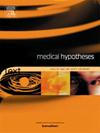Exploring the role of gut microbiota in the pathogenesis of Kashin-Beck Disease: A Focus on selenium deficiency and T-2 toxin exposure
IF 2.1
4区 医学
Q3 MEDICINE, RESEARCH & EXPERIMENTAL
引用次数: 0
Abstract
Kashin-Beck disease (KBD) is a chronic degenerative osteochondral condition endemic to certain regions, with its etiology and pathogenesis yet to be fully understood. Research indicates that low selenium levels and exposure to T-2 toxin are recognized environmental risk factors associated with KBD. The gut microbiota, a complex assemblage of microorganisms residing in the human gastrointestinal tract, engages in intricate interactions with its metabolites and the host organism, which can have either beneficial or harmful impacts on host health. These interactions may contribute to or influence the development and progression of various diseases. Clinical investigations into osteoarthritis (OA) have demonstrated alterations in the gut microbiota of patients, which are closely associated with the onset of OA. Notably, KBD exhibits clinical and pathological similarities to OA. In light of the relationship between gut microbiota and bone-related diseases, we propose the hypothesis that selenium deficiency and T-2 toxin exposure induce dysbiosis of the gut microbiota, thereby contributing to the pathogenesis of KBD. We hypothesize that the gut microbiota and its metabolites may play a role in the injury or necrosis of chondrocytes induced by inflammatory responses, as well as in the degradation of the chondrocyte extracellular matrix (ECM), via the “cartilage-gut-microbiome” axis. This interaction could result in pathological changes in chondrocytes. Understanding this mechanism may offer novel insights for the treatment and management of KBD.
求助全文
约1分钟内获得全文
求助全文
来源期刊

Medical hypotheses
医学-医学:研究与实验
CiteScore
10.60
自引率
2.10%
发文量
167
审稿时长
60 days
期刊介绍:
Medical Hypotheses is a forum for ideas in medicine and related biomedical sciences. It will publish interesting and important theoretical papers that foster the diversity and debate upon which the scientific process thrives. The Aims and Scope of Medical Hypotheses are no different now from what was proposed by the founder of the journal, the late Dr David Horrobin. In his introduction to the first issue of the Journal, he asks ''what sorts of papers will be published in Medical Hypotheses? and goes on to answer ''Medical Hypotheses will publish papers which describe theories, ideas which have a great deal of observational support and some hypotheses where experimental support is yet fragmentary''. (Horrobin DF, 1975 Ideas in Biomedical Science: Reasons for the foundation of Medical Hypotheses. Medical Hypotheses Volume 1, Issue 1, January-February 1975, Pages 1-2.). Medical Hypotheses was therefore launched, and still exists today, to give novel, radical new ideas and speculations in medicine open-minded consideration, opening the field to radical hypotheses which would be rejected by most conventional journals. Papers in Medical Hypotheses take a standard scientific form in terms of style, structure and referencing. The journal therefore constitutes a bridge between cutting-edge theory and the mainstream of medical and scientific communication, which ideas must eventually enter if they are to be critiqued and tested against observations.
 求助内容:
求助内容: 应助结果提醒方式:
应助结果提醒方式:


